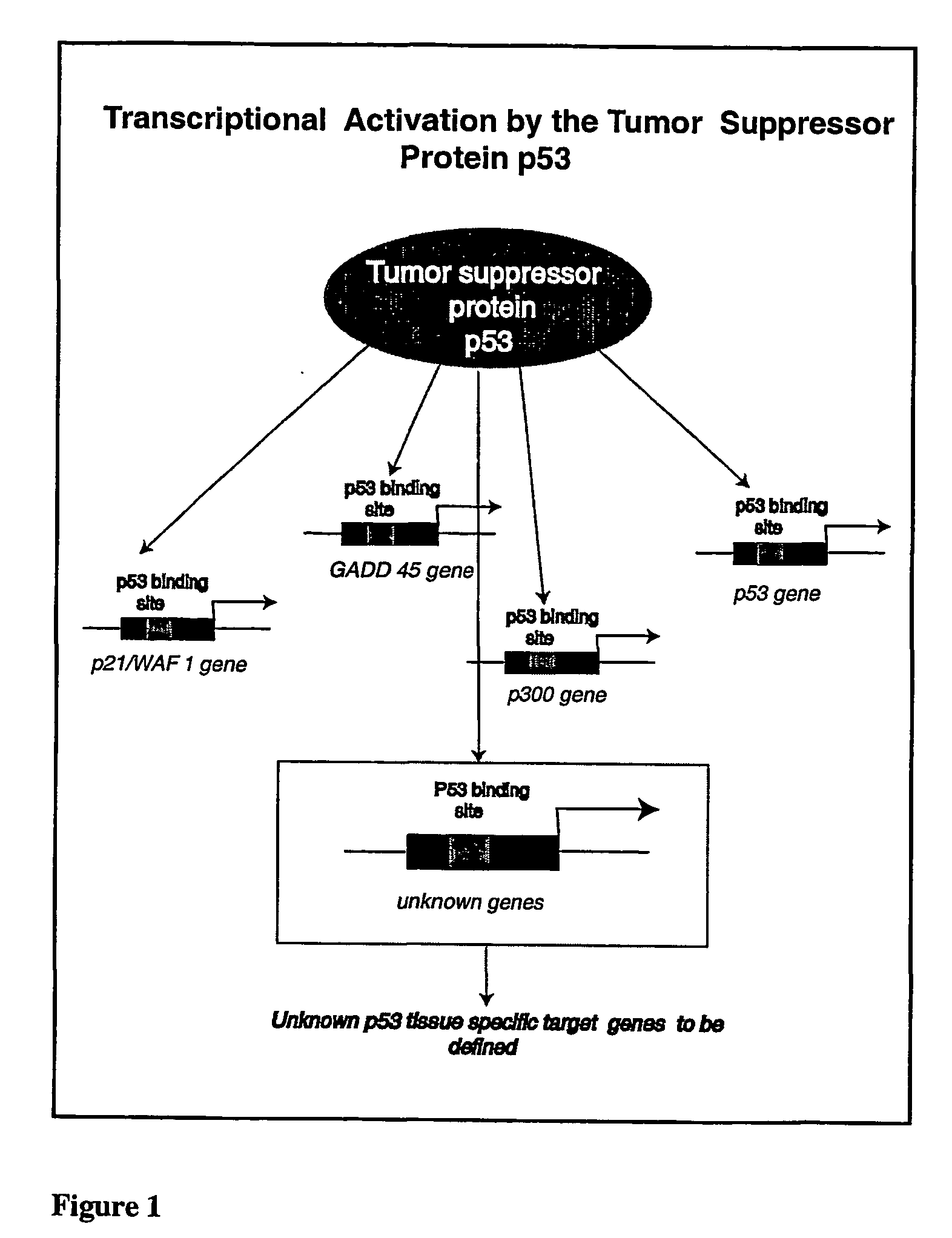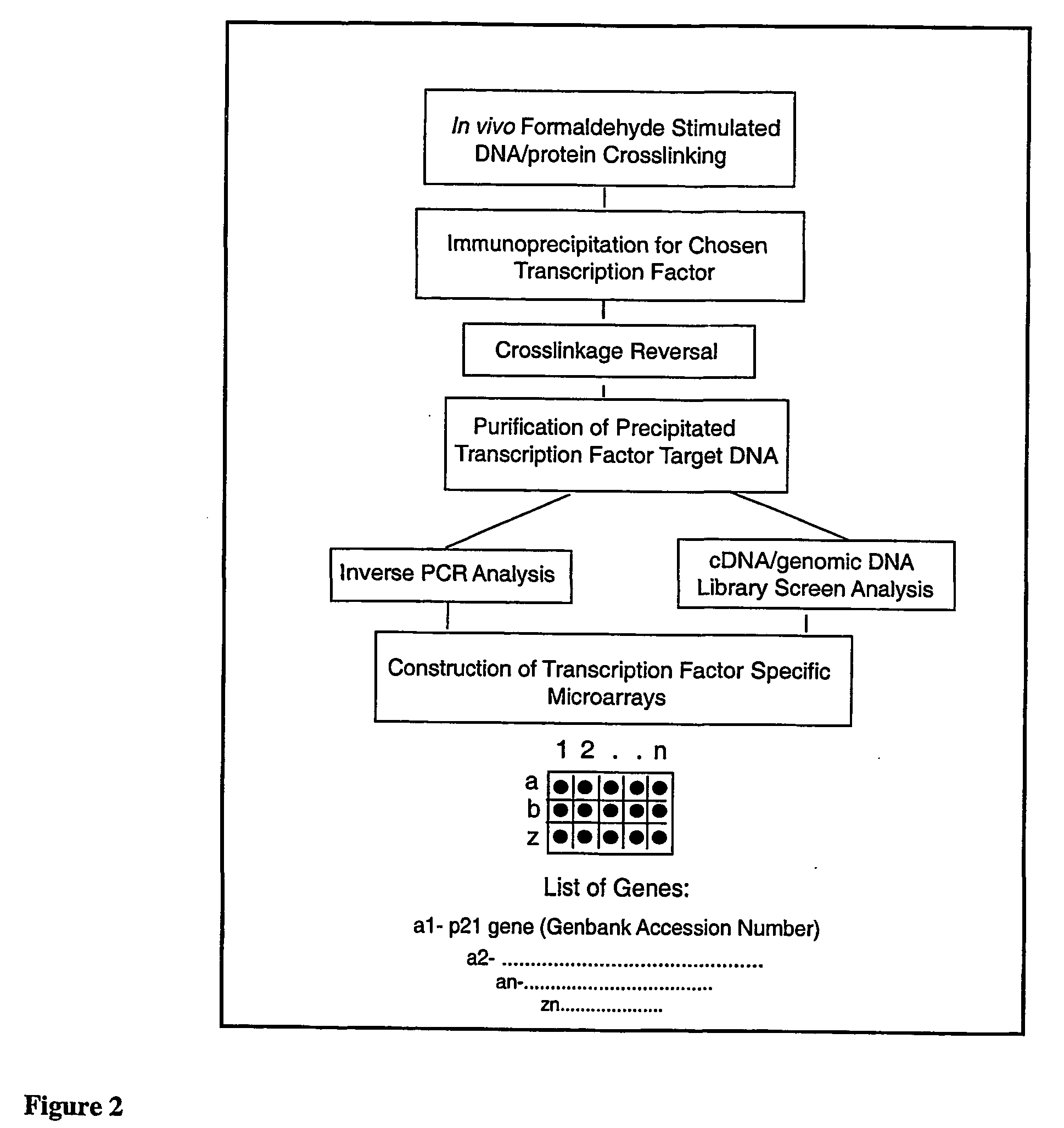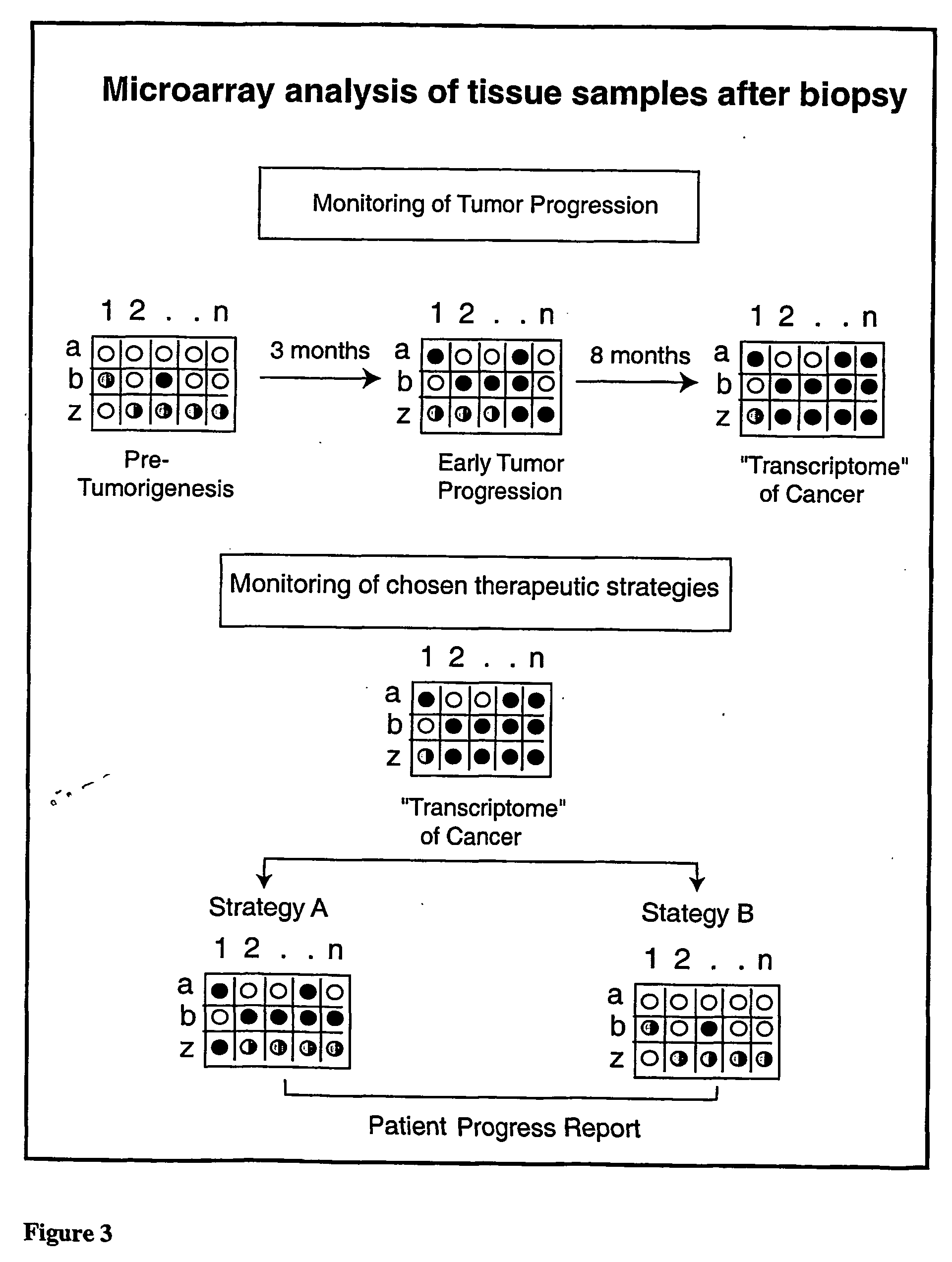Micro-arrayed organization of transcription factor target genes
a transcription factor and microarray technology, applied in microbiological testing/measurement, dna preparation, biochemistry apparatus and processes, etc., can solve the problems of large-scale microarrays and significant costs associated with large-scale microarrays, and reduce background random sequence acquisition, yield and sensitivity increase, and reduce background random sequences
- Summary
- Abstract
- Description
- Claims
- Application Information
AI Technical Summary
Benefits of technology
Problems solved by technology
Method used
Image
Examples
Embodiment Construction
[0036] 5.1 Expression Analysis: The Development of Nucleotide Microarrays
[0037] Organized, large-scale analysis of expression patterns within given tissue or cell population samples has only recently become feasible. The ability to monitor the expression patterns of large numbers of genes and thus obtain a “genetic profile” of virtually any particular sample at any given timepoint promises to reveal in great detail molecular clues to physiology and disease. Indeed, known as “Transcriptomics,” this field is rapidly emerging as an essential and integral subdivision of the field of functional genomics (Drysdale et al., 2000, Yeast, 17(2):159-66).
[0038] A number of technologies have matured which allow for the organized annotation of genes for large-scale expression profiling purposes. These currently include the use of photochemical or inkjet technologies to array either cDNA or oligonucleotide sequences on solid supports such as glass slides or nylon membranes (INSERT MICROARRAY PAT...
PUM
 Login to View More
Login to View More Abstract
Description
Claims
Application Information
 Login to View More
Login to View More - R&D
- Intellectual Property
- Life Sciences
- Materials
- Tech Scout
- Unparalleled Data Quality
- Higher Quality Content
- 60% Fewer Hallucinations
Browse by: Latest US Patents, China's latest patents, Technical Efficacy Thesaurus, Application Domain, Technology Topic, Popular Technical Reports.
© 2025 PatSnap. All rights reserved.Legal|Privacy policy|Modern Slavery Act Transparency Statement|Sitemap|About US| Contact US: help@patsnap.com



